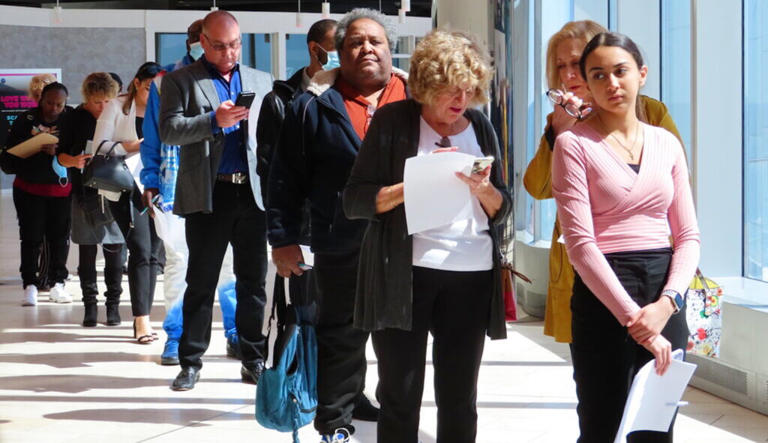The recent survey results from the Harris poll conducted for the Guardian have sparked discussions and raised questions about the prevailing perception of a recession in the United States, despite the economy showing robust growth in output and employment. According to the survey, a significant majority, accounting for 56% of respondents, believe that the country is currently embroiled in a recession. This discrepancy between public sentiment and economic indicators has drawn attention to the nuanced understanding of what constitutes a recession.
However, experts caution against hastily labeling the current economic conditions as a recession, emphasizing specific criteria that define such downturns in economic activity. Brian Marks, Executive Director of the University of New Haven’s Entrepreneurship and Innovation Program, underscores that the economy is nowhere near meeting the criteria for a recession. Traditionally, recessions are characterized by a contraction in economic output and a simultaneous rise in unemployment, typically measured by gross domestic product (GDP) and payroll jobs.
The National Bureau of Economic Research (NBER), a prominent private academic group responsible for dating business cycles, defines a recession as “a significant decline in economic activity that is spread across the economy and that lasts more than a few months.” While the historical rule of thumb often associates two consecutive quarters of negative GDP growth with a recession, other factors such as unemployment rates also play a crucial role in identifying economic downturns.
Despite concerns about inflation and affordability challenges, key economic indicators continue to depict ongoing growth and stability. GDP expansion, albeit at a slower pace, remains positive, with forecasts indicating sustained growth in the coming quarters. Moreover, the labor market exhibits resilience, with consistent job additions and historically low unemployment rates.
However, the persistent perception of economic hardship among the public is fueled by factors such as inflation and rising living costs. This discrepancy between objective economic data and subjective perceptions of economic well-being holds implications for political dynamics, particularly in an election year. While policymakers endeavor to communicate positive economic trends, public perceptions shaped by everyday experiences may influence electoral outcomes.
Ultimately, the survey findings underscore the importance of understanding the nuances of economic indicators and their impact on public sentiment. It highlights the complex interplay between objective economic data and subjective perceptions of economic well-being, emphasizing the need for informed discourse and analysis in interpreting economic trends.

